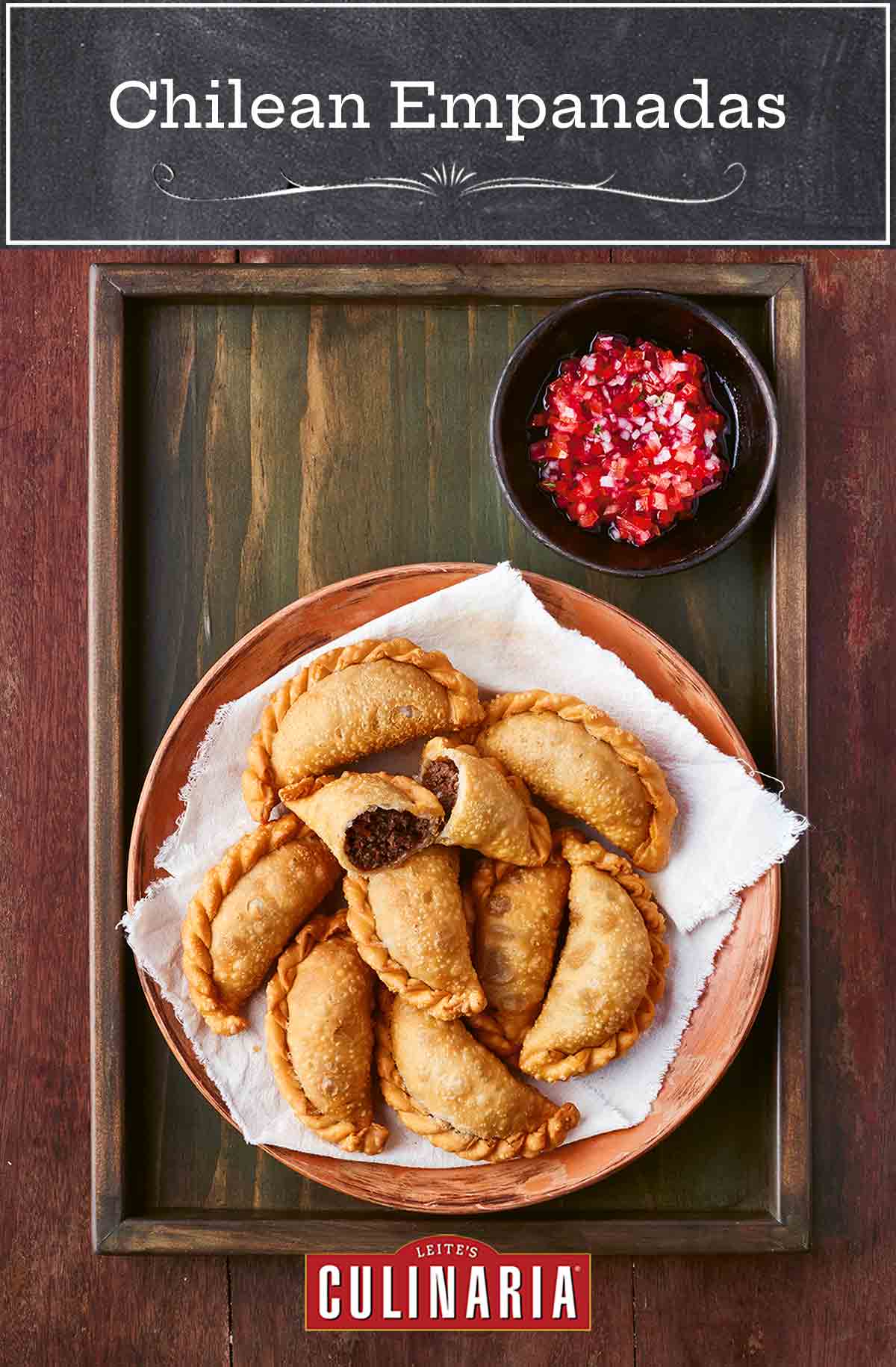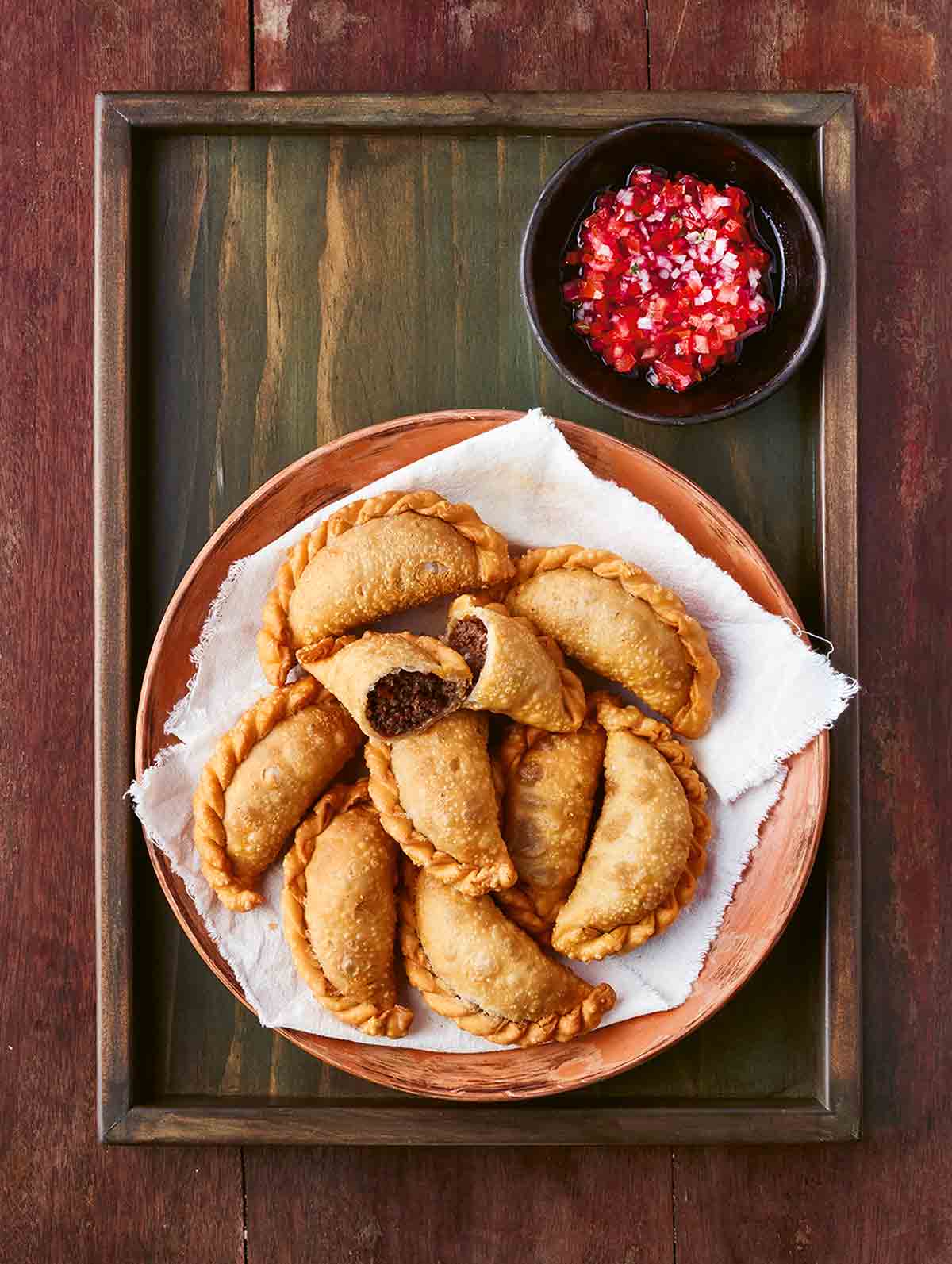
In Chile, empanadas are a national pastime. Upon being elected President in 1970, Salvador Allende even spoke of a “revolution with the taste of red wine and empanadas.” Best when made with lard and cooked in a wood-burning oven, they are everywhere, from roving street vendors to train station cafés to ski resorts.
They come baked or fried and in a variety of shapes and endless number of fillings, though empanadas de pino are the most widespread Chilean empanada. “De pino” is a variation of the Mapuche word pinu, which just means cooked meat, though it has grown to signify a mixture of ground beef and onions, plus hard-boiled egg, olives, and raisins.–Virgilio Martínez
Chilean Meat Empanada FAQs
Empanadas can be found throughout Central and South America and in the Caribbean. They can be made with flour or cornmeal, and be filled with sweet or savory ingredients. Bananas, plantains, cheeses, seafood, chicken, potatoes, chocolate – you name it. Chile is famous for its delicious, traditional meat empanadas.
The word “empanada” comes from the Spanish word “empanar”, which means “to wrap something in bread.” It’s a brilliant concept, and the word does not dictate what exactly is wrapped up, so there are many, many variations based on seasons and what meats, fruits, or vegetables are available.
For this recipe, we recommend sweet paprika. It’ll add a bold red color and sweet peppery flavor without any heat. If you prefer to get a little spicy, reach for hot paprika. If you’re looking to add deeper, more complex flavors, try smoked paprika.
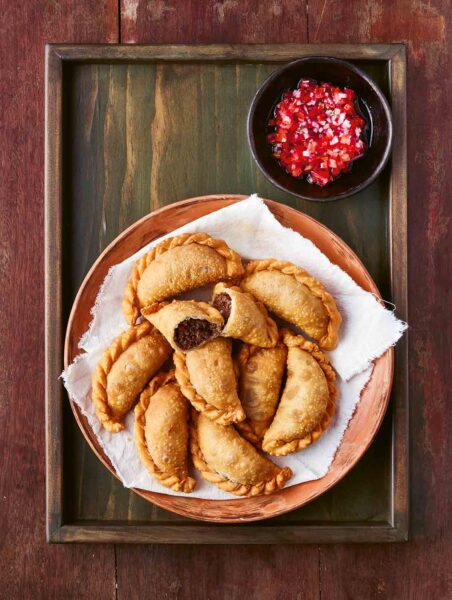
Chilean Meat Empanadas
Ingredients
For the dough
- 4 cups all-purpose flour, plus extra for dusting
- 1 1/2 teaspoons kosher salt
- 3 tablespoons granulated sugar
- 2 tablespoons (1 oz) unsalted butter, chilled
- 12 tablespoons (6 oz) lard
- 2 large egg yolks, whisked with 3/4 cup (175 ml) water
For the beef filling
- 2 tablespoons mild vegetable oil
- 2 tablespoons (1 oz) unsalted butter
- 3 white onions, chopped
- 2 garlic cloves, minced
- 1 pound ground beef, preferably 85/15
- 2 teaspoons ground cumin
- 1 teaspoon chile powder
- 1 tablespoon paprika
- 1/2 cup canned beef broth or homemade beef stock
- 2 tablespoons all-purpose flour, plus more for the work surface
- 1/2 cup raisins
- 1/2 cup pitted and chopped black olives
- 2 hard-boiled eggs, sliced
- Kosher salt and freshly ground black pepper
To glaze
- 1 large egg yolk, beaten with 2 tablespoons whole milk
Instructions
Make the dough
- Place the flour for the dough in a large mixing bowl, then add the salt and sugar. In a small bowl, use a fork to mash the butter and lard together. Add to the dry ingredients and use your hands to knead it all together.
- Slowly add the beaten egg mixture to the flour, until the dough starts to become uniform and smooth. Cover with a tea towel and let rest in the refrigerator for 1 hour.
Make the beef filling
- In a medium skillet over medium heat, warm the oil and butter. Add the onions and garlic and sauté until soft, 5 to 7 minutes.
- Stir in the beef, cumin, chile powder, and paprika, and cook, stirring continuously, for 3 minutes.
- Pour in the beef stock. Season with salt and pepper and cook for about 10 minutes. Add the flour and cook for 3 minutes more. Remove from the heat and stir in the raisins and olives. Let cool.
- Preheat the oven to 350°F (180°C). Line two rimmed baking sheets with parchment paper.
- Divide the dough into 10 equal pieces, shape into balls, and let rest for 10 minutes. On a floured surface, stretch or roll each ball into a 6-inch (15-cm) square, about 1/4 inch (5 mm) thick.
- Place 2 tablespoons of the beef filling in the middle of each square, and top with one slice of hard-boiled egg. Brush the edges of the dough with water and fold the square in half. Brush the sealed edge with water and press with your fingers or use a fork to seal. Place on the prepared baking sheet.
Bake the empanadas
- Brush the empanadas with the egg yolk glaze and bake until golden brown, 35 to 40 minutes.
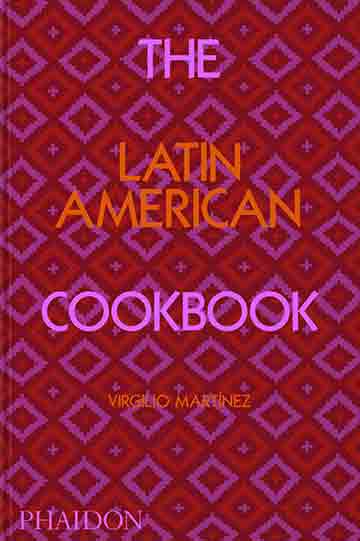
Explore More with AI
Nutrition
Nutrition information is automatically calculated, so should only be used as an approximation.
Recipe Testers’ Reviews
Do not be intimidated by empanadas. This pastry is just wonderful and I feel foolproof! The combination of lard and butter made the flakiest, most flavorful, and sturdy dough ever. Even after stored in Ziplock bags overnight, the leftovers were still crunchy and delicious rewarmed in the microwave the next day.
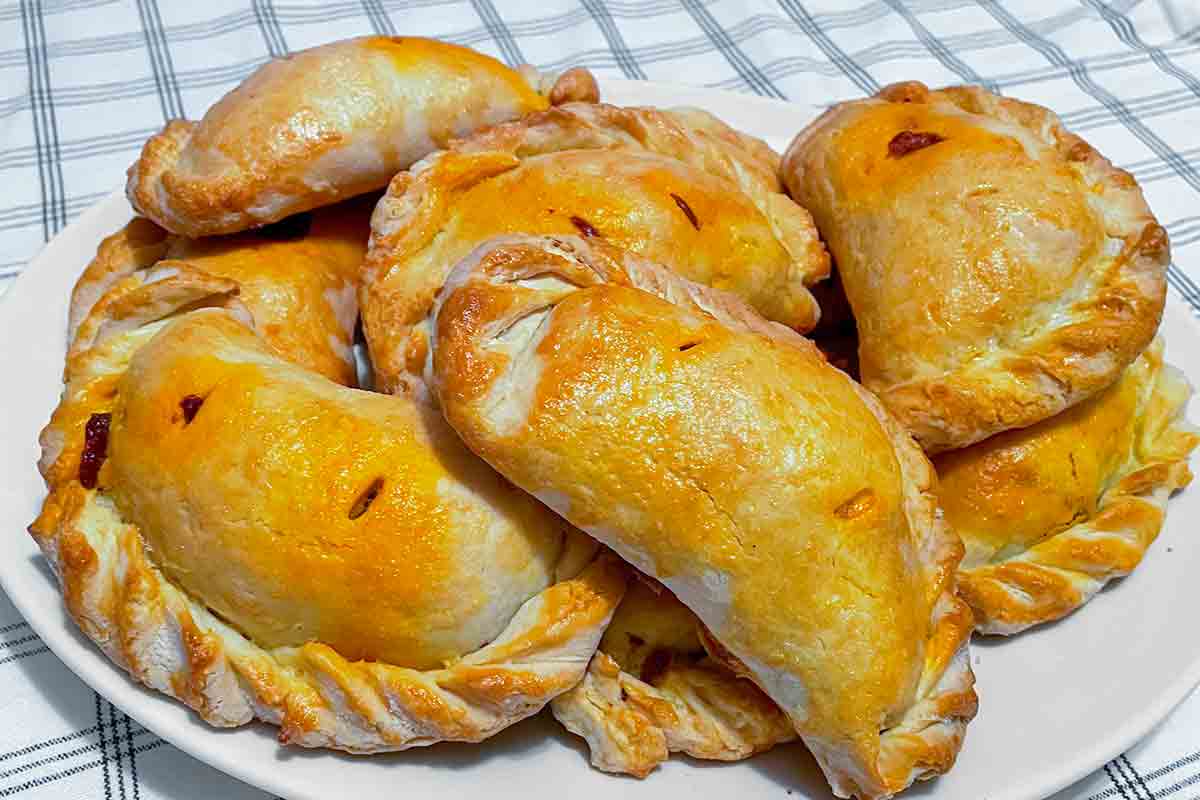
The recipe makes a generous amount of filling. Leftover filling would make a great taco or topping for taco salad. The boiled egg in the filling lends authenticity but not a lot of flavor in my opinion, and you must love olives to enjoy this as written. That being said, the filling would be easy to tailor to your taste.
I can’t wait to try other variations, including using the dough for sweet hand pies. An Argentinian coworker said I did a good job so I was feeling pretty proud after this test! We served these with rice and black beans, chunky pico, and salad with olives and grilled corn with a honey chipotle vinaigrette. A FEAST!
I love a transportable hand pie! They make the perfect on-the-fly lunch and these Chilean meat empanadas delivered. The pastry was just perfect. It was sturdy enough to hold the filling, but still flaky and tender. The filling was nice. I love the sweet and salty combination of the olives and raisins, although I think I would use green olives next time. I used plastic over my cutting board to form the empanada dough and did not need a rolling pin. Worked great and no messy clean-up or extra flour!
First time empanada maker and it was a great success – both in effort and result. The best part of making this recipe, as a pre-Christmas dinner for our family of 4, was assembling the empanadas with my 14 year old son. My son has become an adventurous eater – both out of necessity (growing like a weed) and interest in new flavors. I thought he would balk at the addition of raisins, black olives and hard boiled eggs (it does sound like a strange combo)…but assembling the empanadas together made him even more excited to eat dinner. I should note: my 11 year old did pick out the raisins and olives from his, not surprised!
The dough was very easy to make and pliable and neatly contained all of the filling. I read the description from the recipe to my family as we enjoyed a “new to us” dish, learning a bit of the history made the flavors make even more sense – a sweet and spicy pocket of deliciousness. One empanada was plenty for one person, so you may have some leftover to freeze for a future festive dinner.
